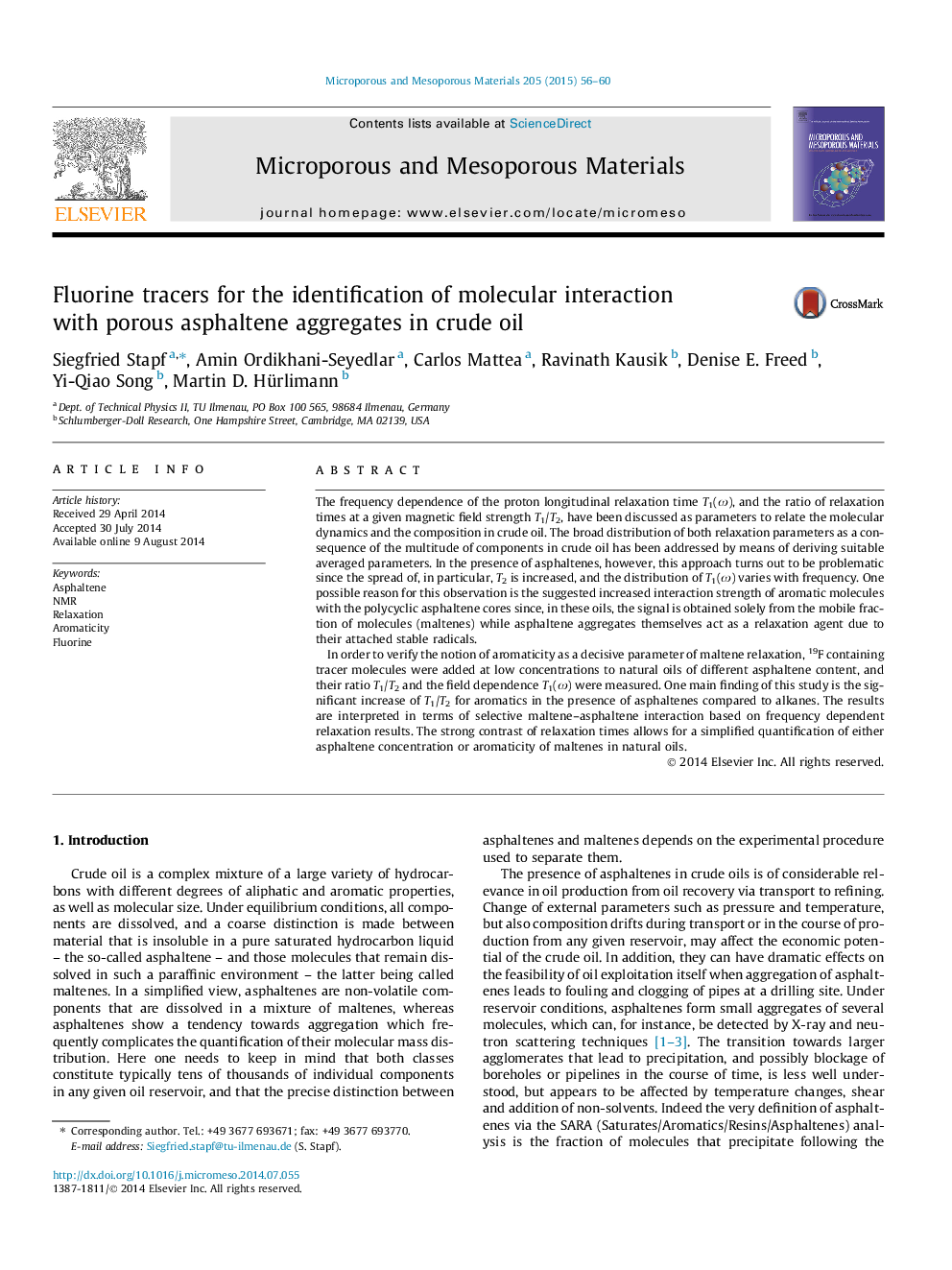| کد مقاله | کد نشریه | سال انتشار | مقاله انگلیسی | نسخه تمام متن |
|---|---|---|---|---|
| 72812 | 49034 | 2015 | 5 صفحه PDF | دانلود رایگان |
• Relaxation of molecules in asphaltene-containing oil depends on aromaticity.
• A strong relaxation dispersion is observed for benzene and toluene in asphaltene-rich oil.
• Fluorine tracers are employed to single out the predicted differences.
• Relaxation is considered a consequence of stable radicals on asphaltenes.
• The method allows in-situ asphaltene identification without the need of lab analysis.
The frequency dependence of the proton longitudinal relaxation time T1(ω), and the ratio of relaxation times at a given magnetic field strength T1/T2, have been discussed as parameters to relate the molecular dynamics and the composition in crude oil. The broad distribution of both relaxation parameters as a consequence of the multitude of components in crude oil has been addressed by means of deriving suitable averaged parameters. In the presence of asphaltenes, however, this approach turns out to be problematic since the spread of, in particular, T2 is increased, and the distribution of T1(ω) varies with frequency. One possible reason for this observation is the suggested increased interaction strength of aromatic molecules with the polycyclic asphaltene cores since, in these oils, the signal is obtained solely from the mobile fraction of molecules (maltenes) while asphaltene aggregates themselves act as a relaxation agent due to their attached stable radicals.In order to verify the notion of aromaticity as a decisive parameter of maltene relaxation, 19F containing tracer molecules were added at low concentrations to natural oils of different asphaltene content, and their ratio T1/T2 and the field dependence T1(ω) were measured. One main finding of this study is the significant increase of T1/T2 for aromatics in the presence of asphaltenes compared to alkanes. The results are interpreted in terms of selective maltene–asphaltene interaction based on frequency dependent relaxation results. The strong contrast of relaxation times allows for a simplified quantification of either asphaltene concentration or aromaticity of maltenes in natural oils.
Figure optionsDownload as PowerPoint slide
Journal: Microporous and Mesoporous Materials - Volume 205, 15 March 2015, Pages 56–60
